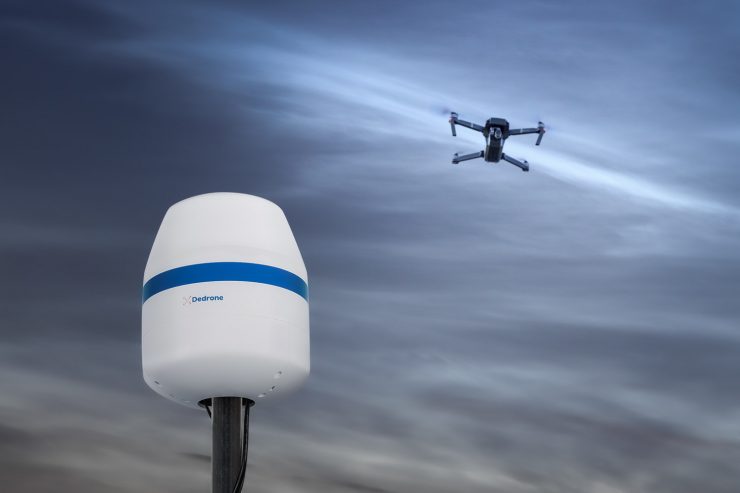Dedrone has expanded its counter drone platform with the launch of the Dedrone RF-160, an upgraded version of the company’s existing foundational RF sensor, the RF-100. The newest radio frequency sensor includes new features such as increased detection range, streamlined installation process, and integrated Long-Term Evolution (LTE) wireless communication. The RF-160 quantifies how many drones are in the user’s airspace, providing early detection of drones, before they even take off. Dedrone also manufactures a separate sensor, the RF-300, which provides localization and tracking of sUAS. The RF-160 is available for order today and will begin delivery in March 2020.
New features of the RF-160 include:
- Integrates LTE for fast startup and access to data for drone risk analysis: Only needing power supply and a pole, it automatically connects to the Dedrone Cloud via LTE and immediately starts to detect drones. An on-premise server is not required. Users can assess their drone risk and use these insights to act upon drone threats.
- Provides detection range of up to 5 km: The RF-160 provides early warning and classification of sUAS. A single RF-160 has an average detection range of 1.6 km, and under ideal conditions, up to 5 km for certain drones. This range extends when one or more RF-160s are working together, and more information on drone activity can be generated when layering with other detection technologies, including the RF-300, radar, and PTZ-cameras.
- Incorporates an advanced design for urban environments: Urban areas have more radio frequency activity from radio communication, televisions, cell phones, GPS, and other technologies. The RF-160 meets the needs of organizations in such environments a with higher potential of RF interference.
- Includes expanded RF band detection range for the detection of commercial, consumer, and home-built sUAS: Radio frequency spectrum operates on a wide range depending on the types of communication technology used. Commercial, off the shelf drones typically operate on the 2.4 and/or 5.8 ghz sub-band. The RF-160 comes with an advanced antenna configuration to ensure that drones that may operate outside the typical spectrum are identified.
- Increased computing power and data processing: The RF-160 features a high-performance processor, enabling rapid data processing and analytics and allows timely responses to sUAS incursions.
For more information visit:




